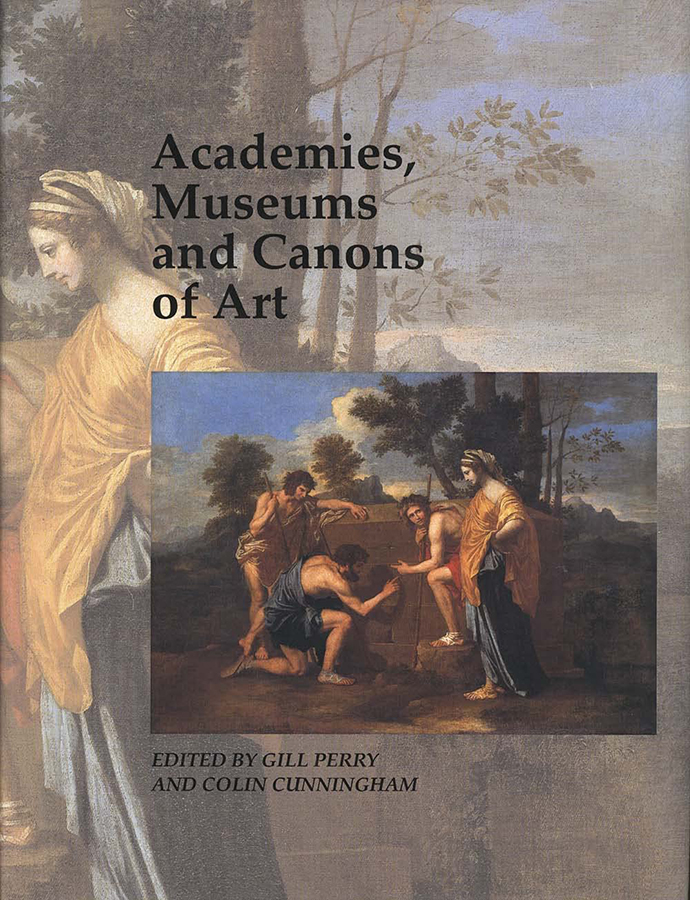
Academies, Museums and Canons of Art
Ed. and co-author (Yale University Press, 1999).
This is the first of six books in the series Art and its Histories which also formed the main texts for an Open University course (code A216), first published in 1999. The book takes the form of a series of case studies but begins with an extended preface by Gill Perry that considers the nature of the modern discipline of art history and its origins in a western canonical tradition. Perry explores the evolving definitions and theories of art history, presenting a picture of a discipline that is in the process of renegotiating its boundaries. She considers historical notions of ‘genius’, ideas of ‘the new art history’ and ‘the social history of art’, theories of ‘looking’ and the problematic notion of the ‘canon’ of art. These are all issues explored in the case studies that follow.
Her chapter: ‘”Mere face painters”? Hogarth, Reynolds and ideas of academic art in eighteenth-century Britain’ (pp. 124 – 168) explores the shifting status of portraiture in mid eighteenth-century Britain, its relationship to ideas of academic art, and the implications of that relationship for the establishment of a canon in art. In seeking to understand what portraits by Hogarth or Reynolds might have meant to a contemporary audience, see explores their different uses of allegory and symbolism. In the process she focuses on the network of relationships between ideas of academic art and art theory, debates about the nature of masculine and feminine portraiture, and the connections between art and theatre in mid 18th-century Britain.